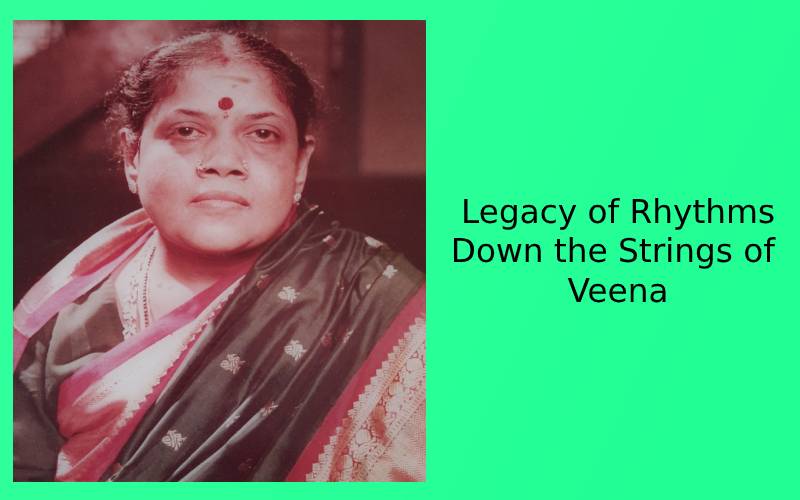
Lalitha Bai (1928 - 1999) was born to Setty S. N. Padmanabha Chetty (1893 - 1973) and Parvathavardhini Thayar of Salem. Padmanabha Chetty was the successful textile merchant and was the founder of Gopala Padma Vilas along with his relative, Jayagopal Chettiar. He was deeply interested in culture and tradition. The textile merchant used to travel all over the country in order to purchase goods for his store. He used to visit all the important temples during his tours. The merchant learnt music and Sanskrit from eminent teachers. He used to play the tambura and sing devotional songs every day. Padmanabha Chetty decided to get his daughters - Vitto Bai, Lalitha Bai and Subadhra to learn music. He engaged the services of the eminent musician, Duraiswamy Iyengar. The teacher had been a student of Poochi Iyengar.
Duraiswamy Iyengar began to teach music to the three daughters of Padmanabha Chetty. He would write the notes with the aid of a pencil. The students had to overwrite the notes with a pen! They had to practice regularly. Padmanabha Chetty and his wife used to ensure that the girls practised during their spare time. Eventually, S. N. Padmanabha Chetty decided to make his daughters play the veena. One Ranganatha Bhagavathar lived in Salem those days. He had been invited to Salem by the famous businessman, Chinnikrishna Chetty in order to get his daughters to learn music. Ranganatha Bhagavathar was a veena maestro. He began to teach the daughters of S. N. Padmanabha Chetty around the year 1937.
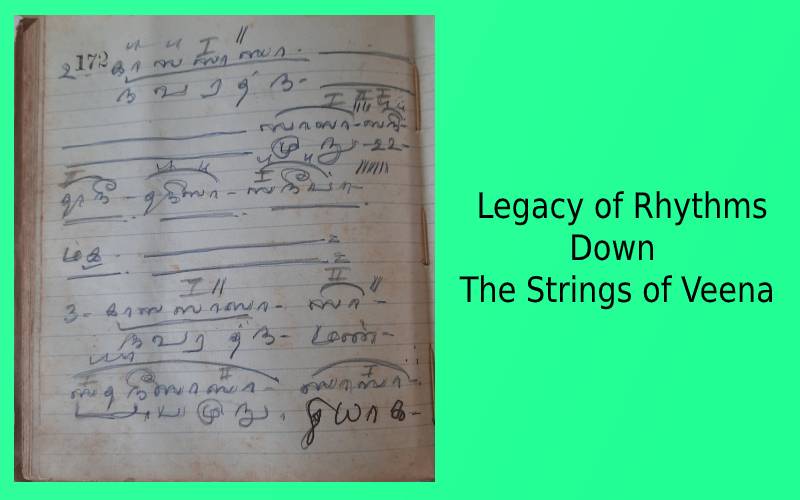
Lalitha Bai who happened to be the middle daughter was quick to pick up. She mastered all the songs by playing regularly. Lalitha Bai's music notebook continues to be preserved by the family. She used to practice in front of her father and mother every day. Lalitha Bai was known to sing the song while playing the notes on her veena. The family residence was endowed with several veenas and they had special cupboards to hold them. Each of the daughters were presented with a veena at the time of their marriage by their father. Lalitha Bai picked up a number of songs. She used to play the ‘Pancha rathna kirtans’ very well. Lalitha Bai moved over to Coimbatore after her marriage to the diamond merchant, P. A. R. Krishnan in 1942. She moved to the historic 'Raju Bhavan' along with her veena.
The young bride used to play the veena every day in her new residence. She used to visit her hometown Salem during the summer holidays and also while delivering her kids. Lalitha Bai used this opportunity to learn from her veena teacher, Ranganatha Bhagavathar. Music ran in her blood and she turned out to be an amazing musician. She would sing very well. Her younger brother-in-law, Damodaran was a young boy of around 5 years of age at the time of her wedding. He was very fond of music during his childhood. Lalitha Bai used to request him to help her with the audio spools. In return she would play exclusive band notes. Damodaran used to love listening to 'the band'. She would use all the frets and strings for playing it.
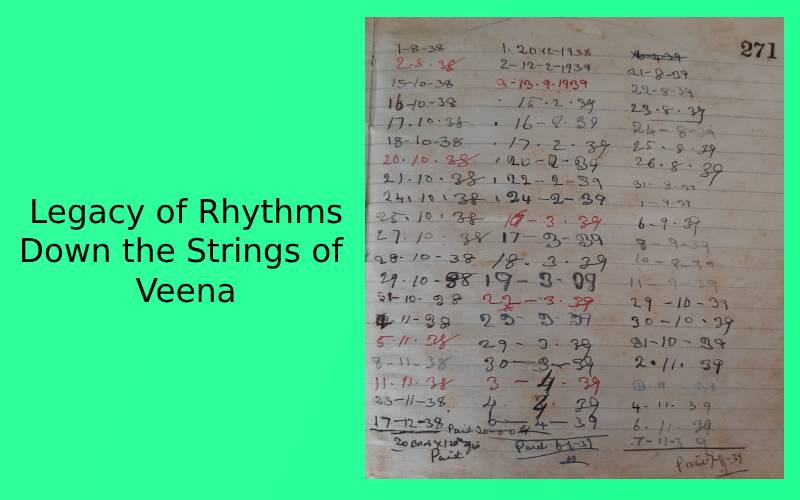
The father-in-law, P. A. Raju Chettiar and mother-in-law, Rajalakshmi used to request Lalitha Bai and her co-sister, Indrani Viswanathan to play the veena once in a way. The music used to be fabulous. It was time when the in-laws used to have betel leaves and nuts while enjoying the music. The other daughters-in-law, Saraswathi and Shantha were good with music. Shantha Damodaran continues to be an amazing musician and she plays the veena regularly even today.
Lalitha Bai used to light the lamps in her pooja room by about 5 PM and begin playing the veena. She would begin with the song 'Vatapi Ganapatim' by Muthuswami Dikshithar and continue with songs like 'Nagumomu'. Her childlike son, Shankar used to insist that she played 'Nagumomu' often. Lalitha Bai would have her family members as her audience. She would talk about ‘Melakartha Ragas’, ‘Raga Devathas’ and songs by several composers. Lalitha Bai would state that the ‘Raga Devathas’ would dance with joy if the Ragas were rendered well for otherwise, they would be upset. Therefore, it was incumbent on the person to approach the Raga well. The music teachers who taught the members of her family would consult her before they began to teach a song. Lalitha Bai was a constructive critic.
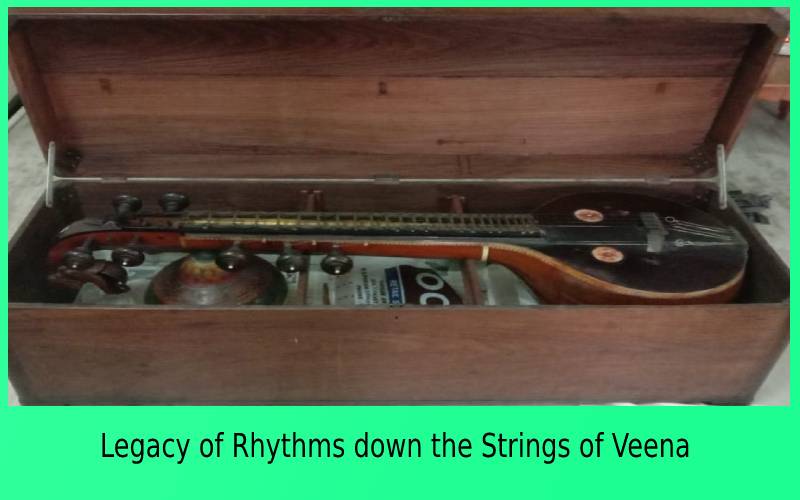
The names of all the leading dancers, singers and musicians were on her fingertips. She used to be in praise of Veenai Dhanammal, Veenai S. Balachander and Chitti Babu. She used to narrate the stories of Purandara Dasa, Tyagayya, Muthuswamy Dikshithar and Syama Sastri to the kids in her family. Lalitha Bai was keen to play in the Thyagaraja Aradhana at Thiruvaiyaru. She was deeply impressed with work on Bangalore Nagarathinamma, the lady who had put in her all for the shrine of Thyagayya those days. Lalitha Bai used to chat up about composers like Papanasam Sivan and Annamayya. She heard the concerts of many like M. S. Subbulakshmi, M. L. Vasanthakumari, Semmagudi Srinivasa Iyer, Ariyakudi Ramanuja Iyengar, among others. Her spiritual guide had been Sengalipuranantharama Dikshithar and the favourite deity was Lord Guruvayoorappan. She would read the Narayaneeyam every day.
Lalitha Bai was keen to ensure that her kids picked up music. She made sure her kids Govindarajulu, Sridharan, and Nirmala learnt music. While Nirmala played the veena, Govindarajulu grew up to play a number of musical instruments. He would play the guitar, mandolin, violin, harmonium and jalatharangam. In fact, Lalitha Bai's music master, Ranganatha Bhagavathar went to Bangalore for the purpose of getting the jalatharangam bowls. Aravindakumari Govindarajulu, the first daughter-in-law was from Salem and Lalitha Bai fixed up Ranganatha Bhagavathar to teach her music while she was waiting to deliver her first child. Aravindakumari learnt how to play veena during this period.
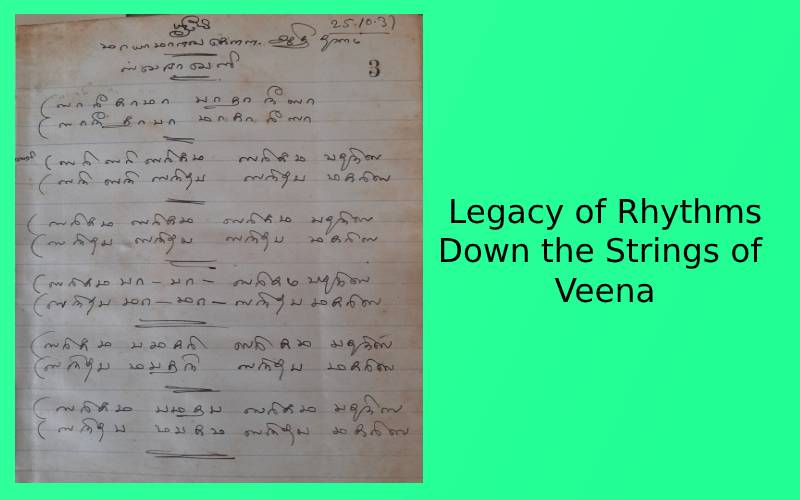
The homemaker cum musician, Lalitha Bai learned music from Veda Krishnaswamy along with her co-sisters in Coimbatore. They mastered Ashtapadhi, Soundarya Lahari, and a number of other sacred compositions over the years. Veda Mami taught had taught them the hundred verses of Soundarya Lahari in hundred Ragams. The entire household used to reverberate with music those days. Lalitha Bai and her co-sisters performed the 'Radha Kalyanam' too while learning Ashtapadhi (composed by Jayadeva). Lalitha Bai would always wear Conjeevarams, diamond earrings, diamond nose pins and diamond bangles regularly. However, she considered wearing the glass bangles as extremely important. She would sport a big kumuma pottu and wear a bun. She had veenas made in all materials with her. Her favourite was a veena made of silver and it used to double up as a pan box. The veena was her life and she used to talk about music with almost everyone who were known to her. She was a lifelong learner. A number of youngsters used to play in front of her and get her feedback in order to improve themselves. She would always encourage people. The Thiruvaiyaru Thyagaraja Aradhana was the time when she would identify all the leading musicians of the times. She would sit in front of the television at home in order to enjoy the rendering of the ‘Pancha Rathna Kirthanas’. Lalitha Bai was forever keen that her family maintains the musical tradition. The Saraswathi Pooja was her day. She would get all the musical instruments assembled on mats and apply vibhuti and kumkumam on them. All the instruments would be decorated with flowers. The family members used to play the instruments thereafter. She would ensure that their music notebooks were treated similarly. Lalitha Bai collected songs and music books all her life. Names like Harikesanallur Muthiah Bhagavathar, Chembai Vaidyanatha Bhagavathar, Musiri Subramanya Iyer, Uthukadu Venkatakavi, G. N. Balasubramaniam etc., were used by her in her day to day conversations.
Lalitha Bai had got a miniature veena and tambura for her kids. Music was her passion all her life. All her near and dear continue to remember her lifelong passion for music.
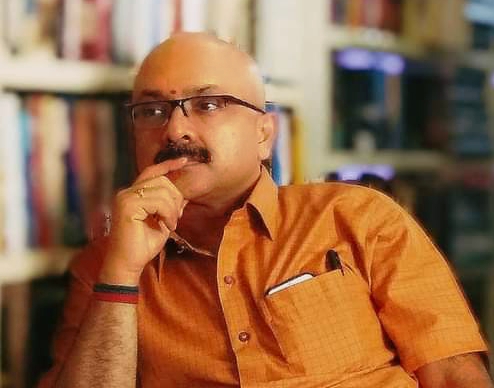
Mr. Rajesh Govindarajulu, Chief Curator, The Verandah Club. He is a leading columnist, historian, jeweler, and entrepreneur. He is a heritage enthusiast who is earnestly working to revive the past in the light of the present. Experiential learning about the history of Coimbatore is his main course of interest and he is also a panel member in a numerous city.
NEXT ARTICLE